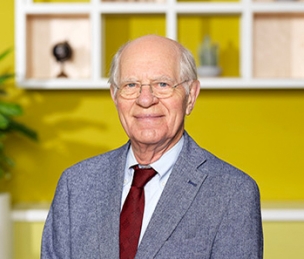Displaying 1 - 5 of 5
-
Levelt, W. J. M., Praamstra, P., Meyer, A. S., Helenius, P., & Salmelin, R. (1998). An MEG study of picture naming. Journal of Cognitive Neuroscience, 10(5), 553-567. doi:10.1162/089892998562960.
Abstract
The purpose of this study was to relate a psycholinguistic processing model of picture naming to the dynamics of cortical activation during picture naming. The activation was recorded from eight Dutch subjects with a whole-head neuromagnetometer. The processing model, based on extensive naming latency studies, is a stage model. In preparing a picture's name, the speaker performs a chain of specific operations. They are, in this order, computing the visual percept, activating an appropriate lexical concept, selecting the target word from the mental lexicon, phonological encoding, phonetic encoding, and initiation of articulation. The time windows for each of these operations are reasonably well known and could be related to the peak activity of dipole sources in the individual magnetic response patterns. The analyses showed a clear progression over these time windows from early occipital activation, via parietal and temporal to frontal activation. The major specific findings were that (1) a region in the left posterior temporal lobe, agreeing with the location of Wernicke's area, showed prominent activation starting about 200 msec after picture onset and peaking at about 350 msec, (i.e., within the stage of phonological encoding), and (2) a consistent activation was found in the right parietal cortex, peaking at about 230 msec after picture onset, thus preceding and partly overlapping with the left temporal response. An interpretation in terms of the management of visual attention is proposed. -
Levelt, W. J. M., & Schiller, N. O. (1998). Is the syllable frame stored? [Commentary on the BBS target article 'The frame/content theory of evolution of speech production' by Peter F. McNeilage]. Behavioral and Brain Sciences, 21, 520.
Abstract
This commentary discusses whether abstract metrical frames are stored. For stress-assigning languages (e.g., Dutch and English), which have a dominant stress pattern, metrical frames are stored only for words that deviate from the default stress pattern. The majority of the words in these languages are produced without retrieving any independent syllabic or metrical frame. -
Levelt, W. J. M. (1998). The genetic perspective in psycholinguistics, or: Where do spoken words come from? Journal of Psycholinguistic Research, 27(2), 167-180. doi:10.1023/A:1023245931630.
Abstract
The core issue in the 19-century sources of psycholinguistics was the question, "Where does language come from?'' This genetic perspective unified the study of the ontogenesis, the phylogenesis, the microgenesis, and to some extent the neurogenesis of language. This paper makes the point that this original perspective is still a valid and attractive one. It is exemplified by a discussion of the genesis of spoken words. -
Meyer, A. S., Sleiderink, A. M., & Levelt, W. J. M. (1998). Viewing and naming objects: Eye movements during noun phrase production. Cognition, 66(2), B25-B33. doi:10.1016/S0010-0277(98)00009-2.
Abstract
Eye movements have been shown to reflect word recognition and language comprehension processes occurring during reading and auditory language comprehension. The present study examines whether the eye movements speakers make during object naming similarly reflect speech planning processes. In Experiment 1, speakers named object pairs saying, for instance, 'scooter and hat'. The objects were presented as ordinary line drawings or with partly dele:ed contours and had high or low frequency names. Contour type and frequency both significantly affected the mean naming latencies and the mean time spent looking at the objects. The frequency effects disappeared in Experiment 2, in which the participants categorized the objects instead of naming them. This suggests that the frequency effects of Experiment 1 arose during lexical retrieval. We conclude that eye movements during object naming indeed reflect linguistic planning processes and that the speakers' decision to move their eyes from one object to the next is contingent upon the retrieval of the phonological form of the object names. -
Roelofs, A., Meyer, A. S., & Levelt, W. J. M. (1998). A case for the lemma/lexeme distinction in models of speaking: Comment on Caramazza and Miozzo (1997). Cognition, 69(2), 219-230. doi:10.1016/S0010-0277(98)00056-0.
Abstract
In a recent series of papers, Caramazza and Miozzo [Caramazza, A., 1997. How many levels of processing are there in lexical access? Cognitive Neuropsychology 14, 177-208; Caramazza, A., Miozzo, M., 1997. The relation between syntactic and phonological knowledge in lexical access: evidence from the 'tip-of-the-tongue' phenomenon. Cognition 64, 309-343; Miozzo, M., Caramazza, A., 1997. On knowing the auxiliary of a verb that cannot be named: evidence for the independence of grammatical and phonological aspects of lexical knowledge. Journal of Cognitive Neuropsychology 9, 160-166] argued against the lemma/lexeme distinction made in many models of lexical access in speaking, including our network model [Roelofs, A., 1992. A spreading-activation theory of lemma retrieval in speaking. Cognition 42, 107-142; Levelt, W.J.M., Roelofs, A., Meyer, A.S., 1998. A theory of lexical access in speech production. Behavioral and Brain Sciences, (in press)]. Their case was based on the observations that grammatical class deficits of brain-damaged patients and semantic errors may be restricted to either spoken or written forms and that the grammatical gender of a word and information about its form can be independently available in tip-of-the-tongue stales (TOTs). In this paper, we argue that though our model is about speaking, not taking position on writing, extensions to writing are possible that are compatible with the evidence from aphasia and speech errors. Furthermore, our model does not predict a dependency between gender and form retrieval in TOTs. Finally, we argue that Caramazza and Miozzo have not accounted for important parts of the evidence motivating the lemma/lexeme distinction, such as word frequency effects in homophone production, the strict ordering of gender and pho neme access in LRP data, and the chronometric and speech error evidence for the production of complex morphology.

Share this page